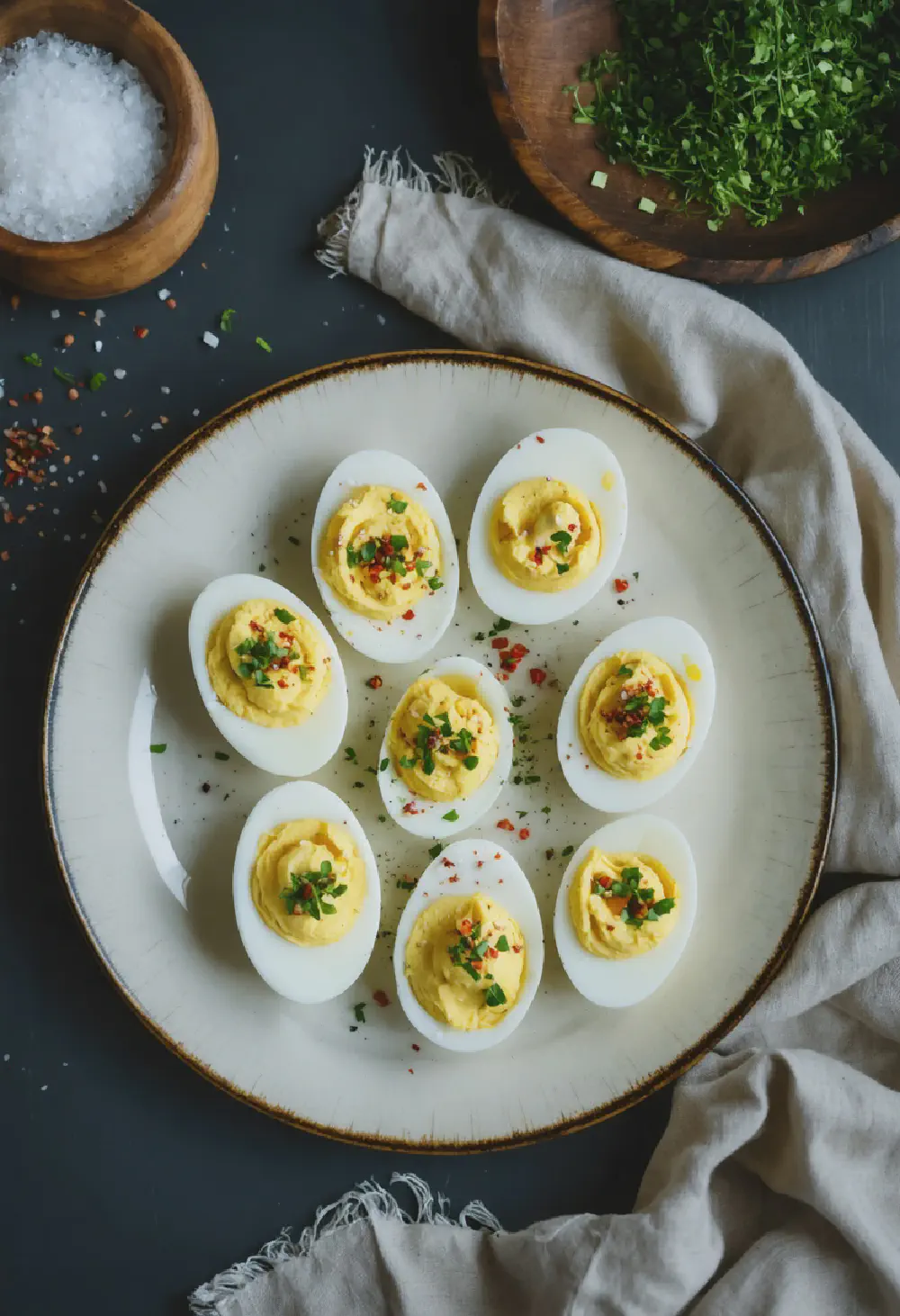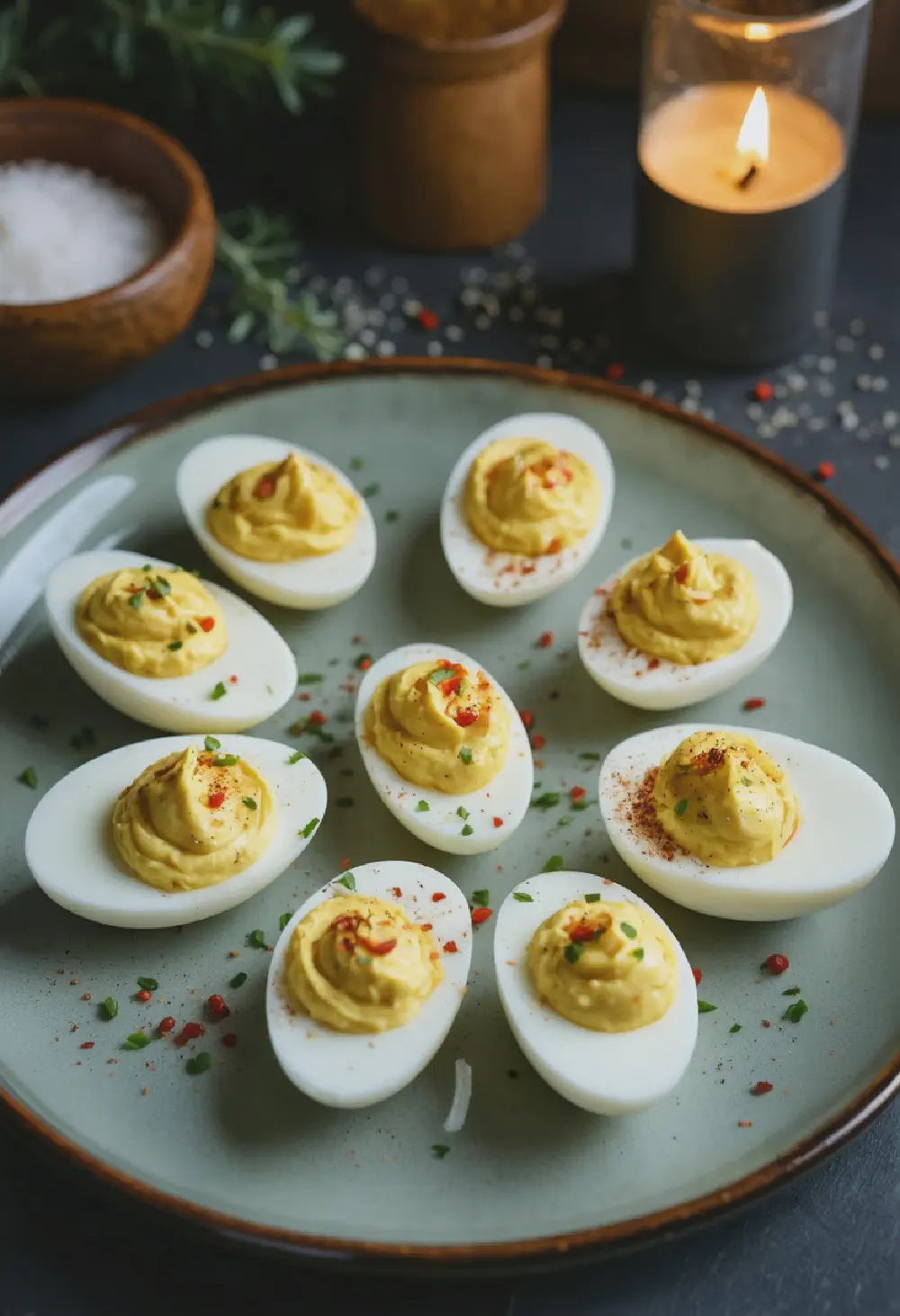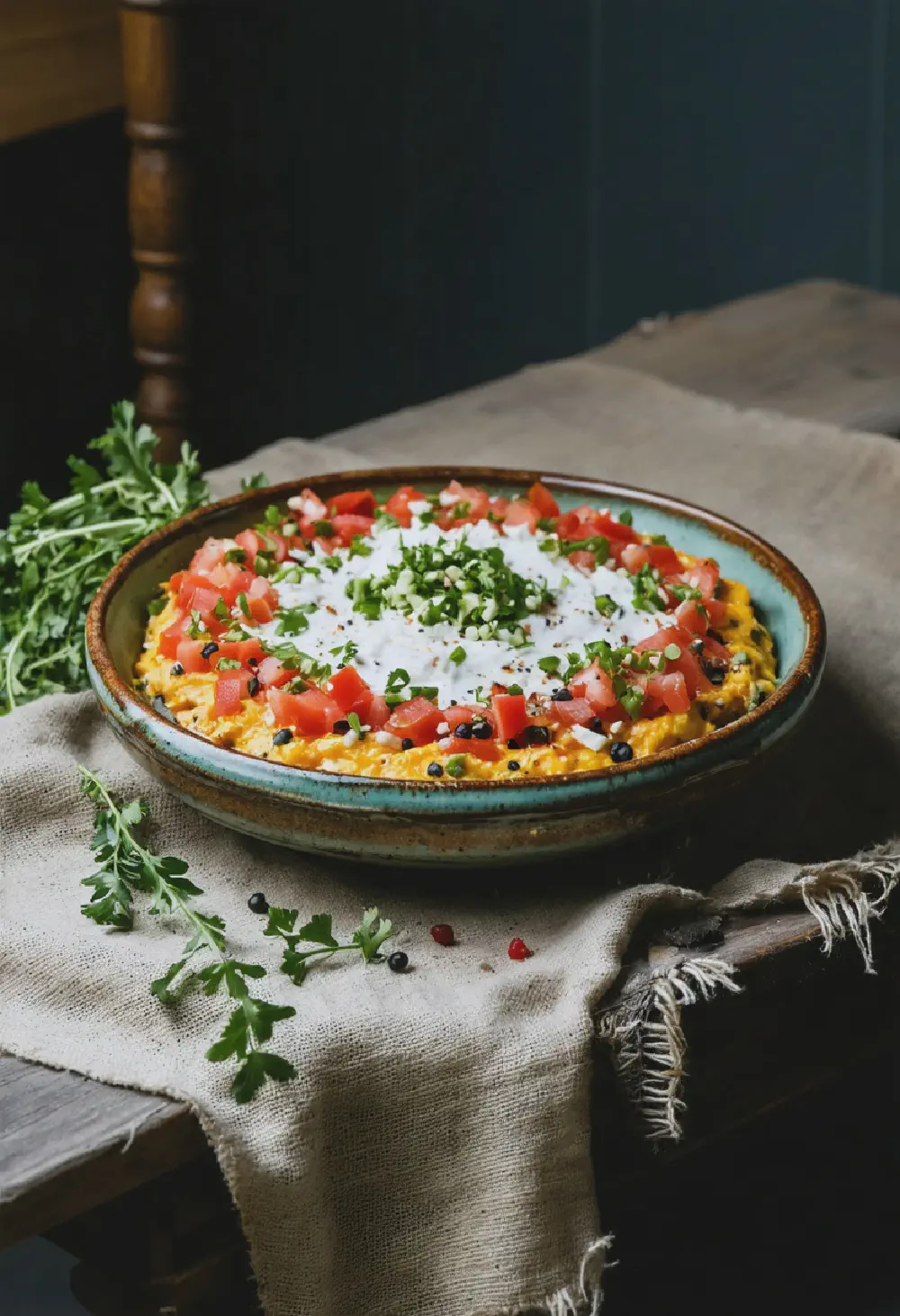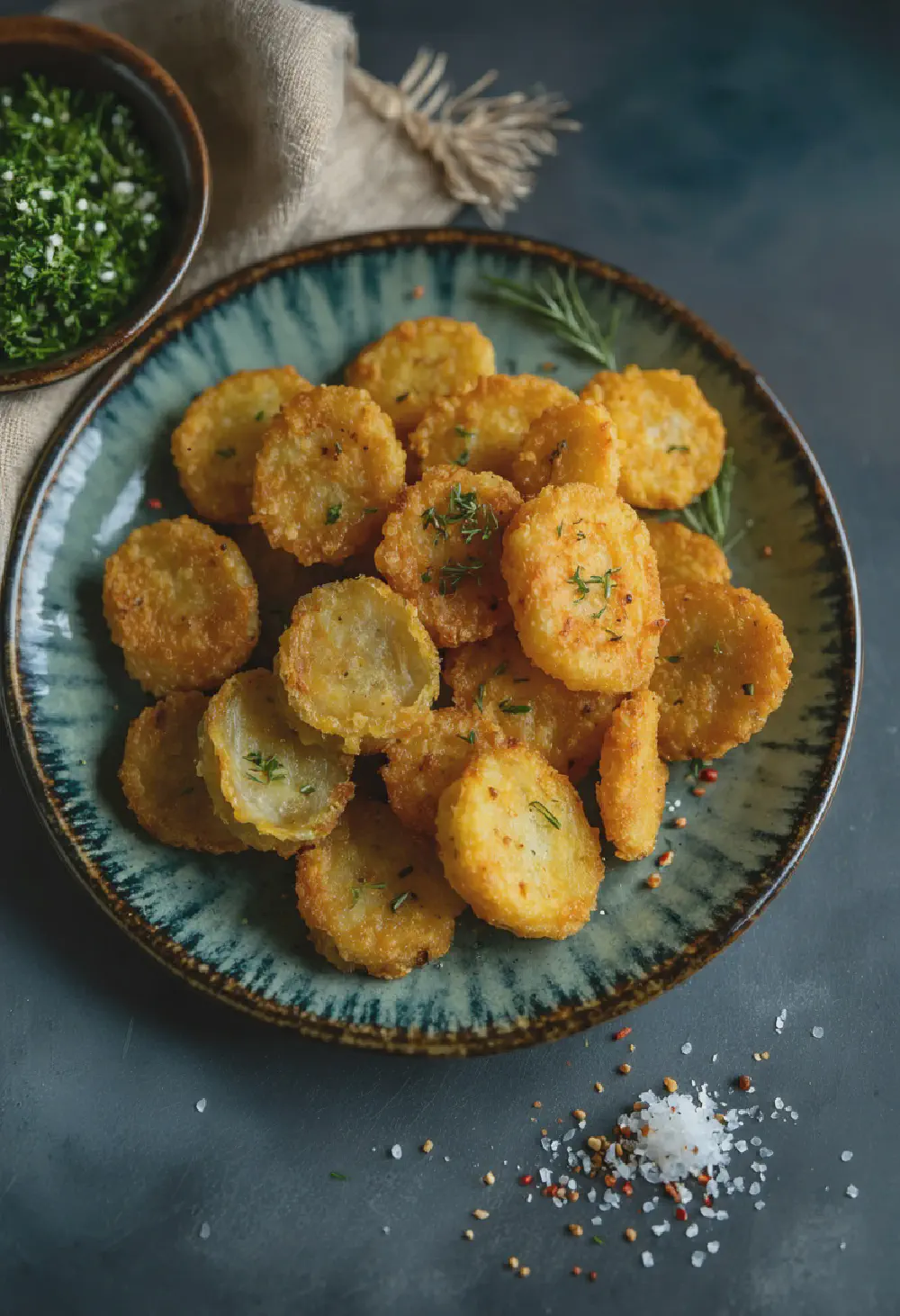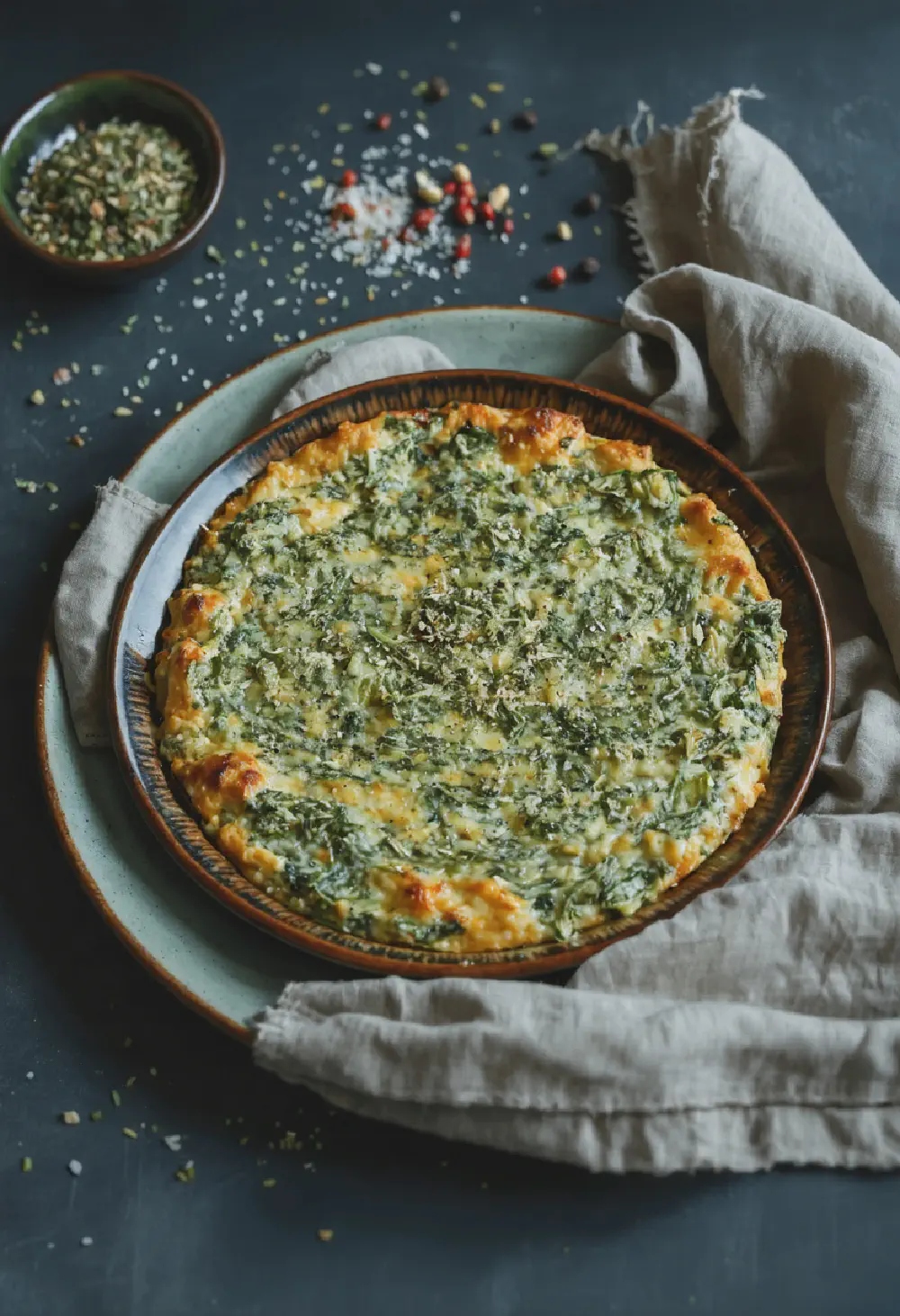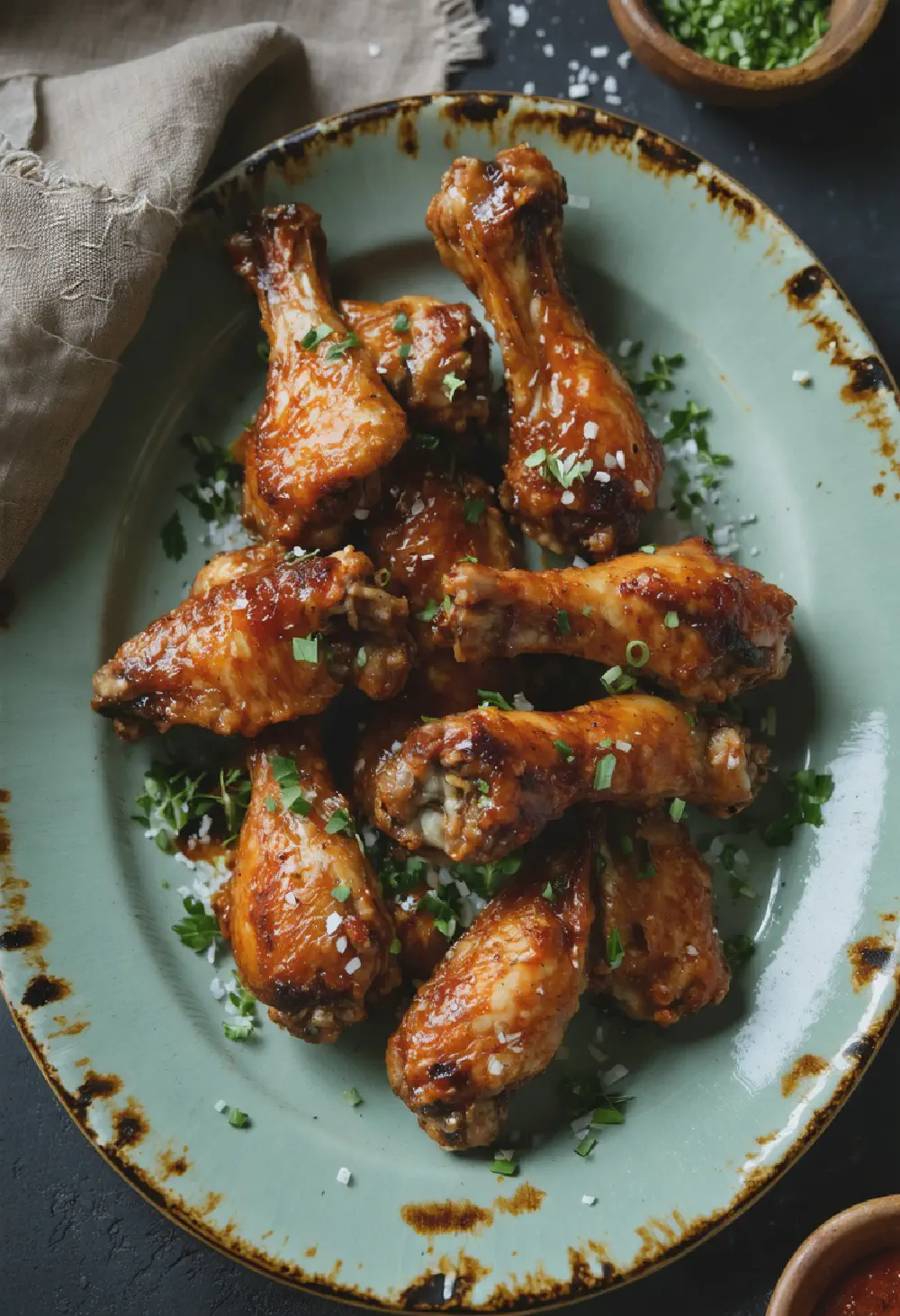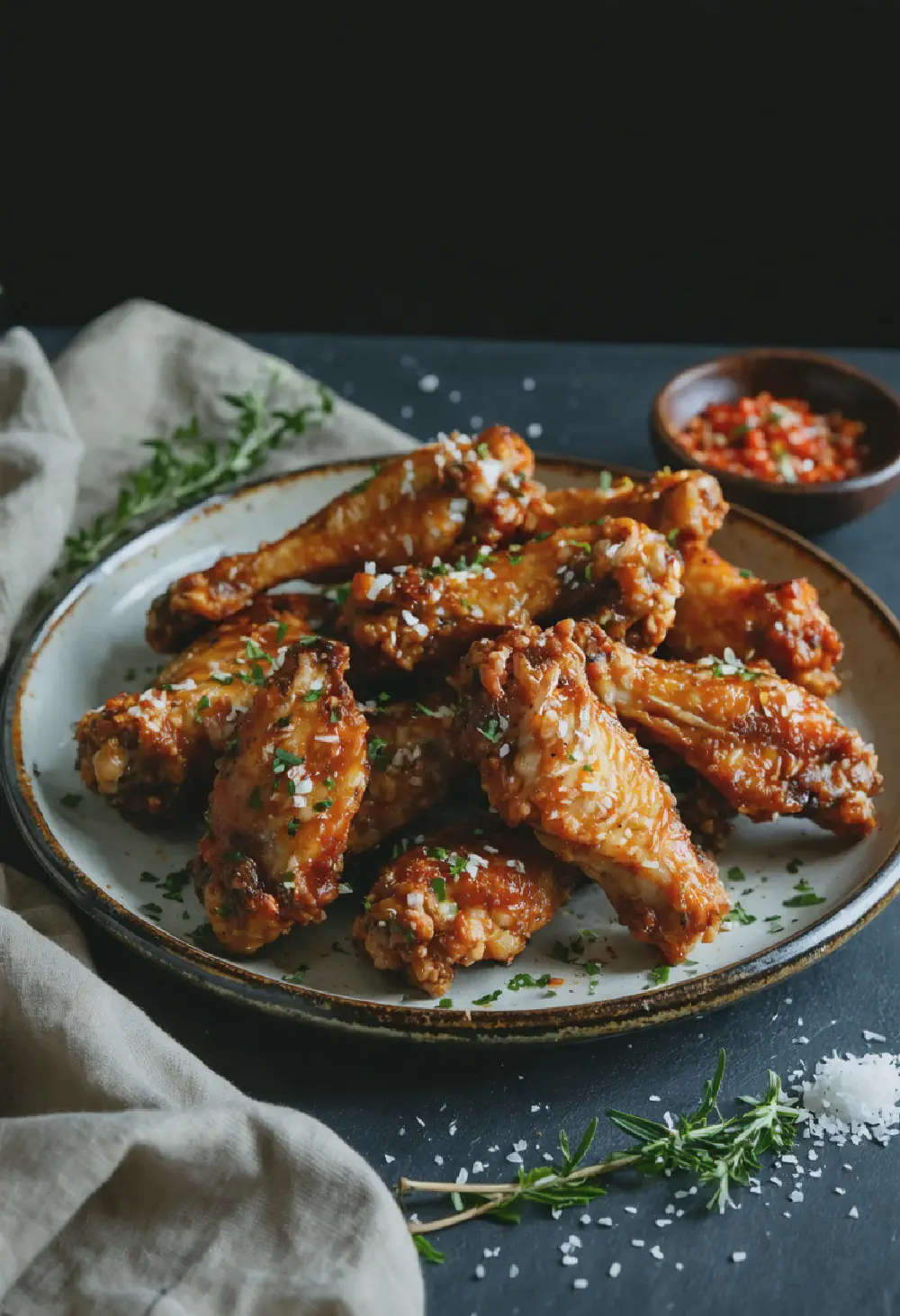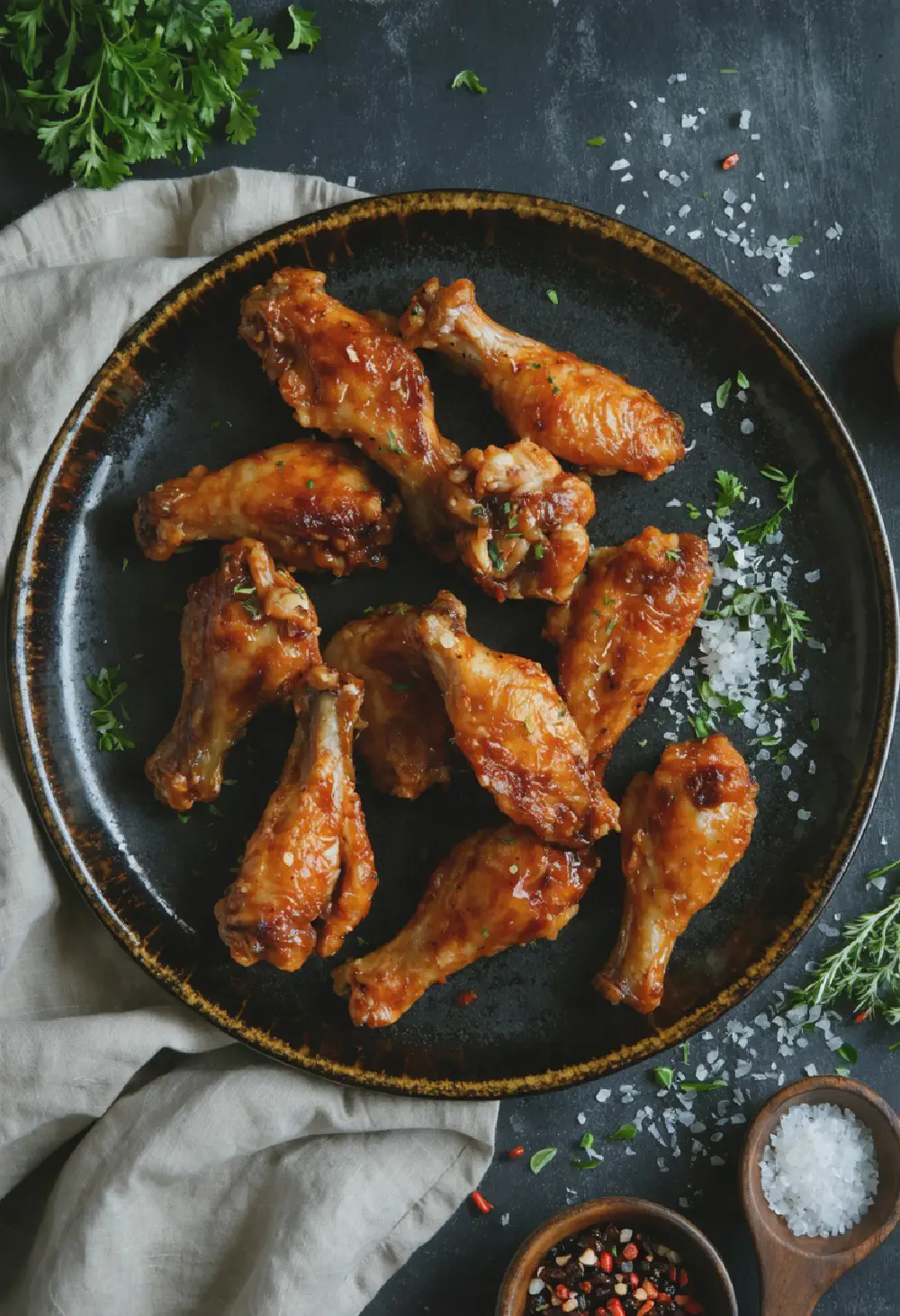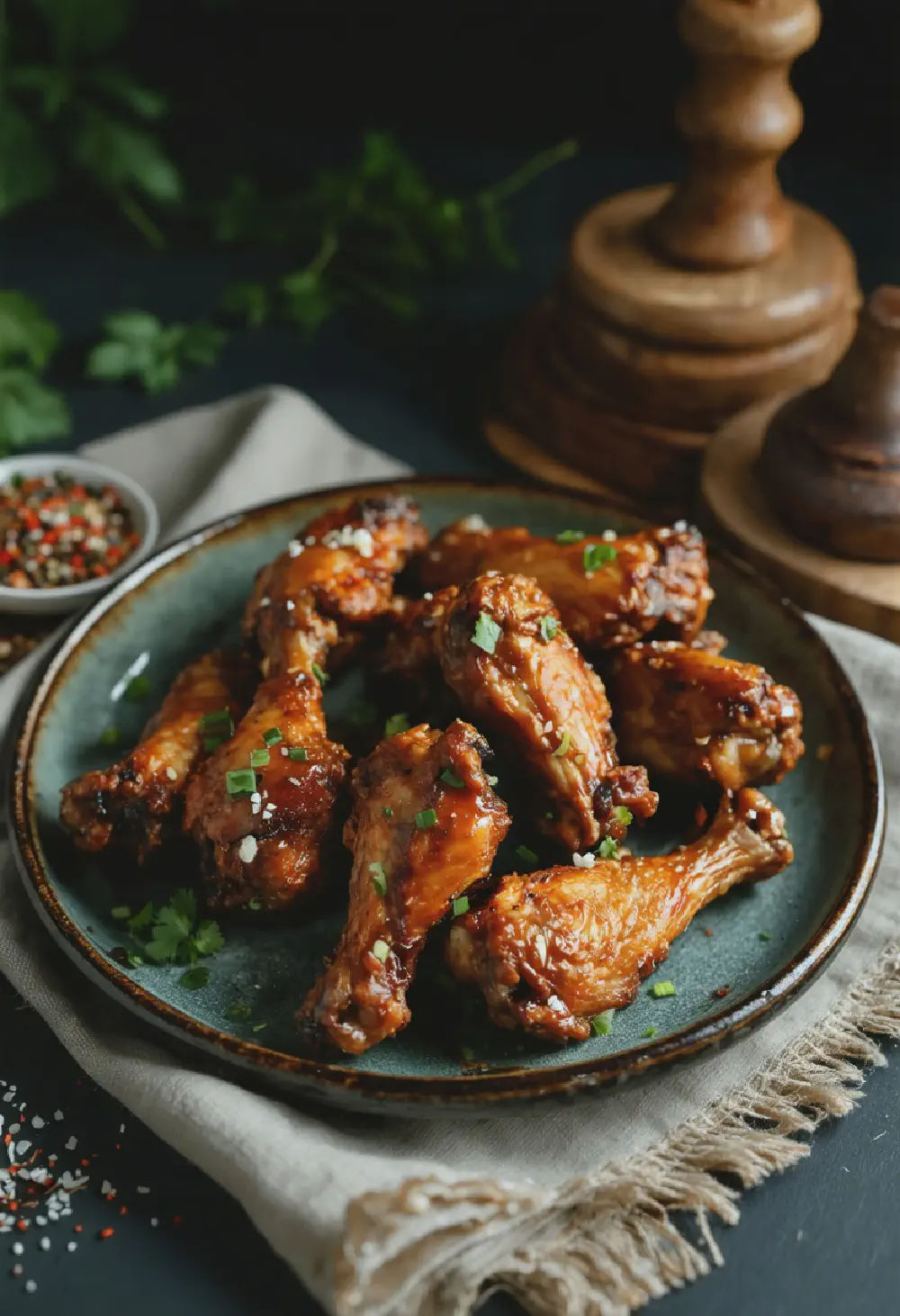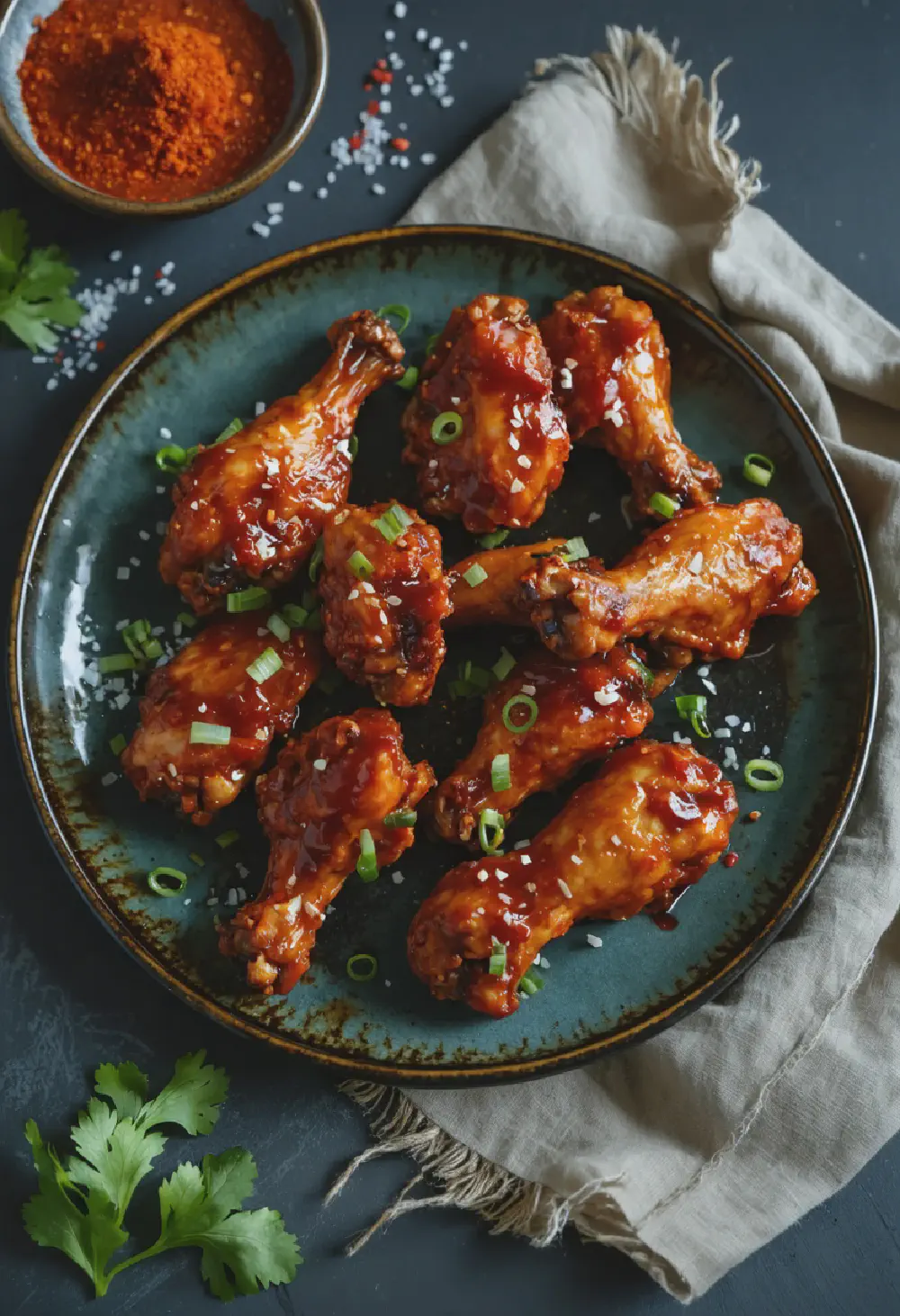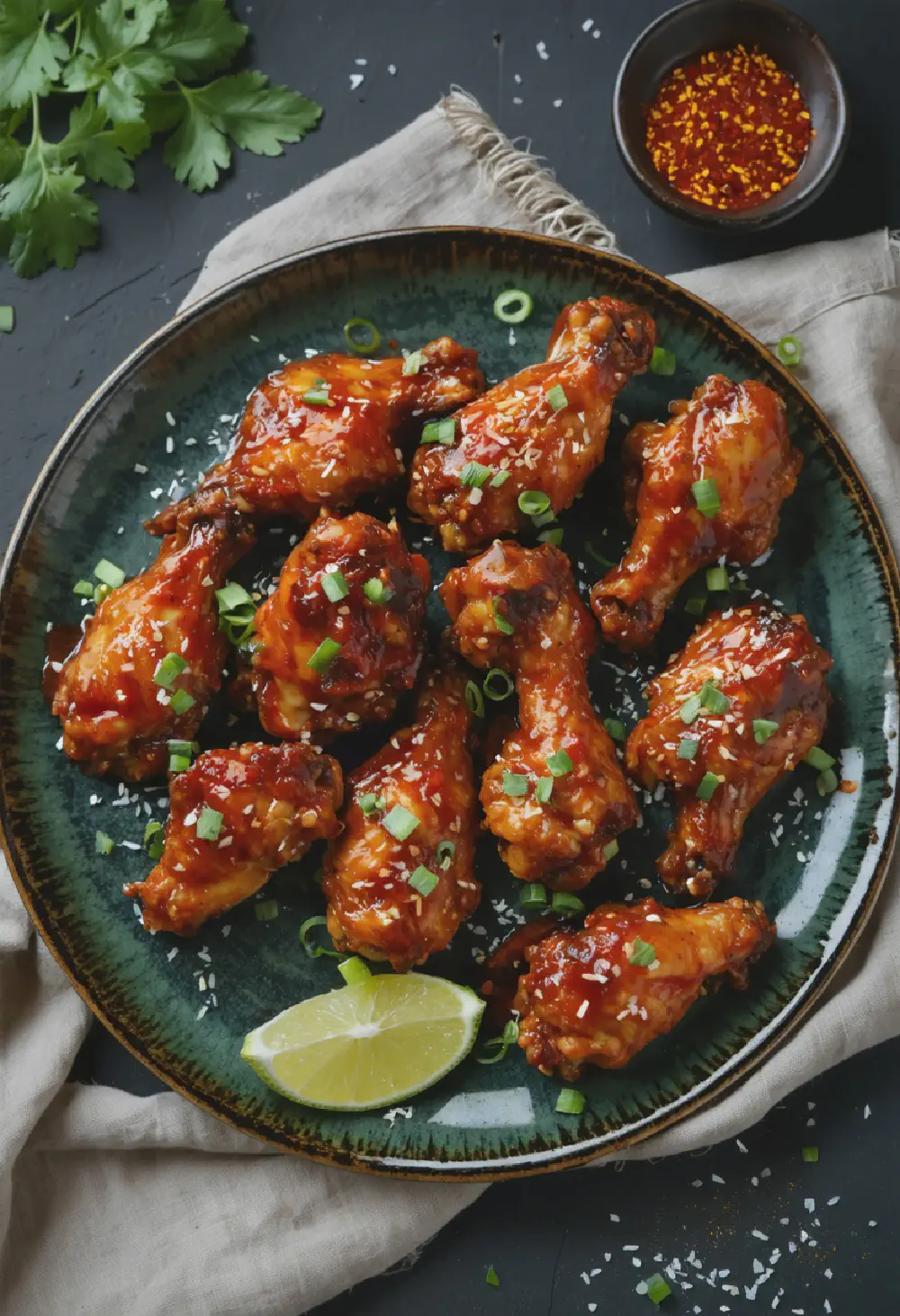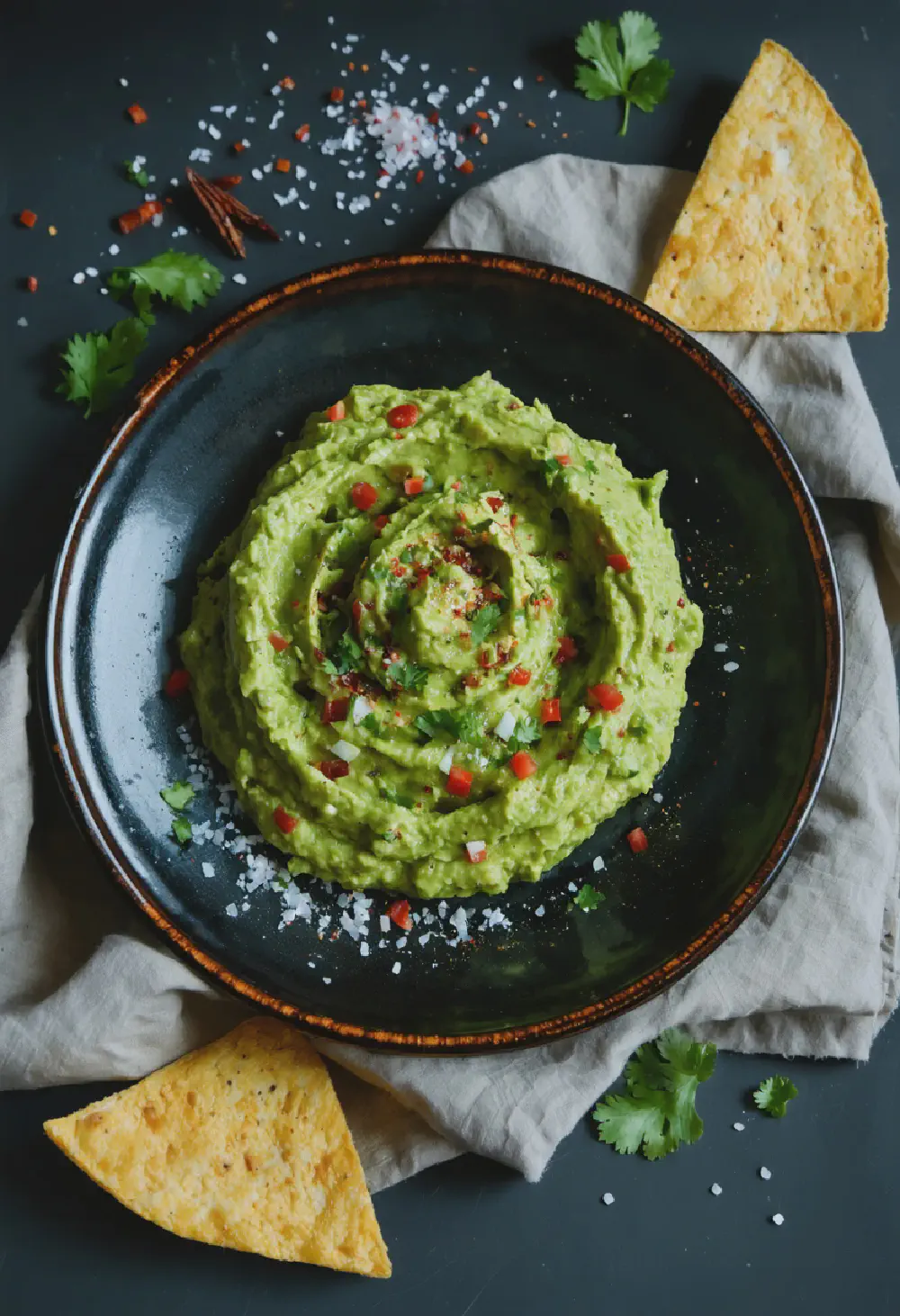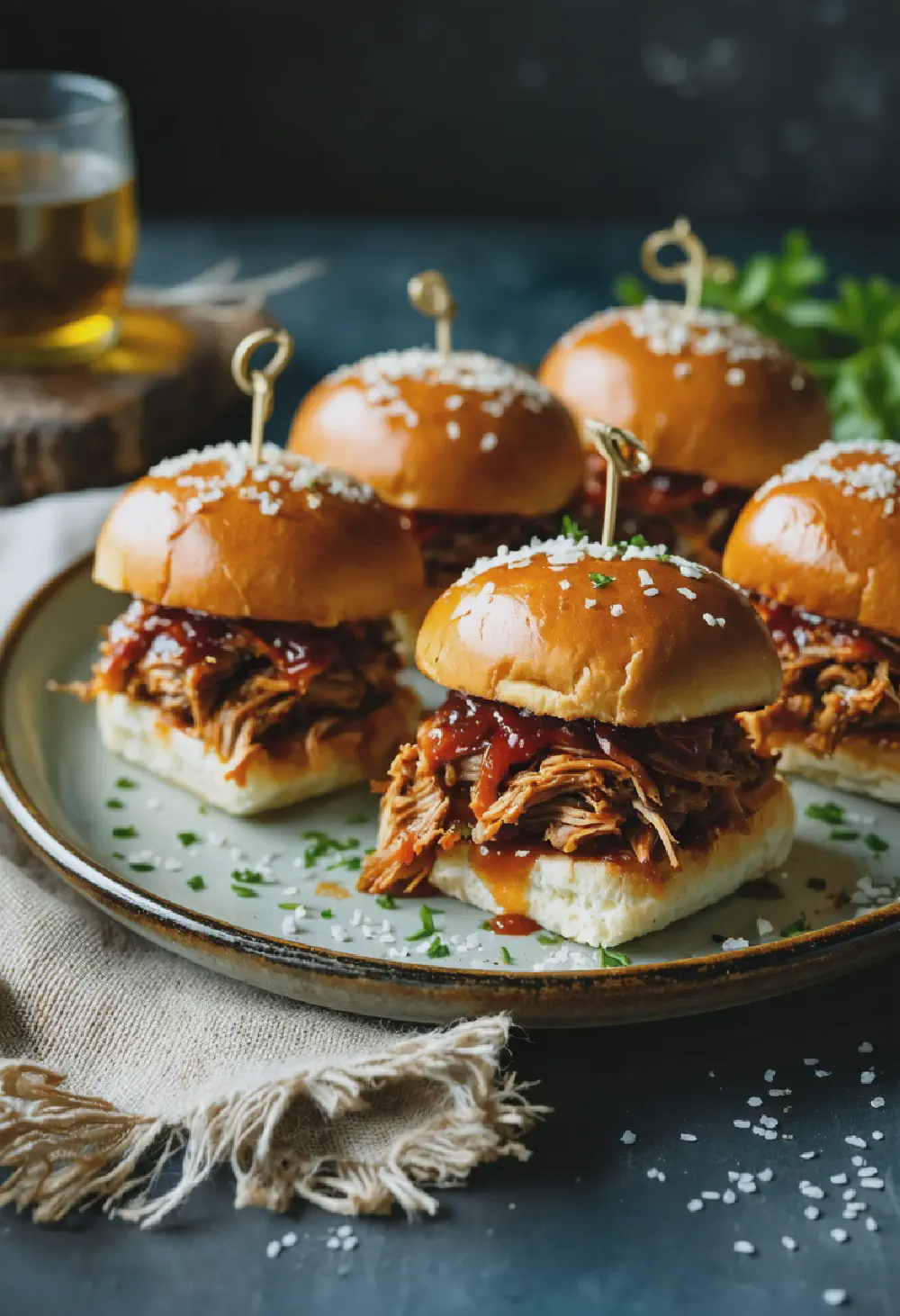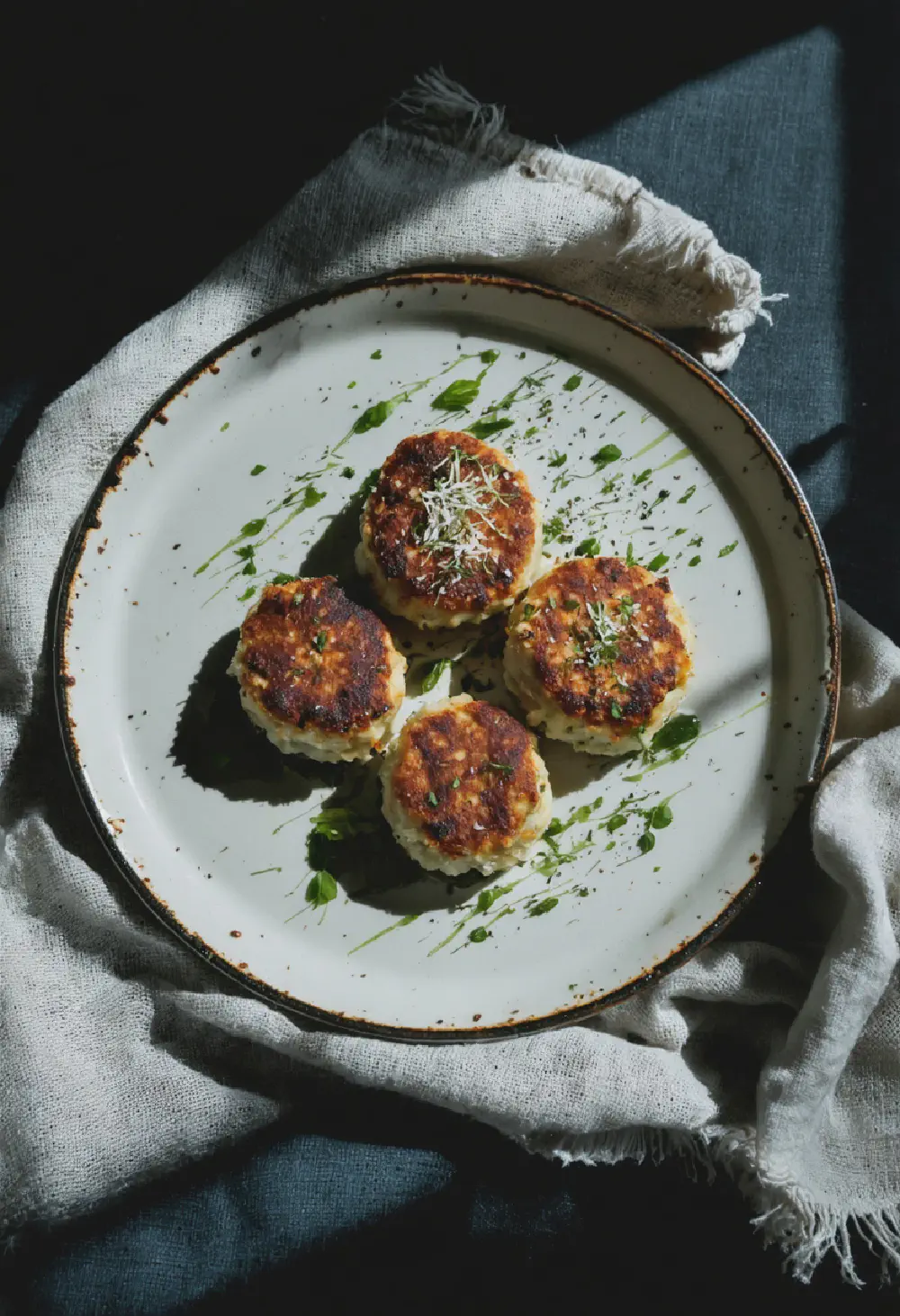Classic American Deviled Eggs
15M
25M
- Makes 12 servings
- 6 large eggs
- 1/4 cup mayonnaise
- 1 teaspoon white vinegar
- 1 teaspoon yellow mustard
- 1/8 teaspoon salt
- Freshly ground black pepper
- Paprika, for garnish
- Place eggs in a single layer in a saucepan and cover with enough water that there's 1 1/2 inches of water above the eggs. Heat on high until water begins to boil, then cover, turn the heat to low, and cook for 1 minute. Remove from heat and leave covered for 14 minutes, then rinse under cold water continuously for 1 minute.
- Crack egg shells and carefully peel under cool running water. Gently dry with paper towels. Slice the eggs in half lengthwise, removing yolks to a medium bowl, and placing the whites on a serving platter.
- Mash the yolks into a fine crumble using a fork. Add mayonnaise, vinegar, mustard, salt, and pepper, and mix well.
- Evenly disperse heaping teaspoons of the yolk mixture into the egg whites. Sprinkle with paprika and serve.
Classic American Deviled Eggs: A Timeless Appetizer
History
The history of deviled eggs can be traced back to ancient Rome, where eggs were boiled, seasoned, and served as a popular dish. However, the term “deviled” in reference to food was first used in the 18th century to describe spicy or zesty dishes. Classic American Deviled Eggs, as we know them today, became a staple in American cuisine in the mid-20th century. They gained popularity as a simple yet elegant appetizer, perfect for picnics, potlucks, and family gatherings. The traditional recipe has evolved over time, but the essence of the dish remains a beloved part of American culinary heritage.
Taste Profile
Classic American Deviled Eggs are renowned for their creamy and tangy flavor profile. The filling, made with a blend of mayonnaise, mustard, and a hint of vinegar, offers a smooth texture that contrasts beautifully with the firm egg white. The addition of paprika and sometimes a sprinkle of chives or dill adds a subtle yet delightful complexity to the taste. This combination of flavors makes deviled eggs an irresistible appetizer that appeals to a wide range of palates.
Cultural Significance
In American cuisine, deviled eggs hold a special place as a symbol of comfort and tradition. They are a common sight at holiday gatherings, such as Easter, Thanksgiving, and Fourth of July celebrations, where they evoke a sense of nostalgia and togetherness. Deviled eggs are also a popular choice for potlucks and barbecues, embodying the communal spirit of American social events. Their versatility and ease of preparation have cemented their status as a beloved classic in American culinary culture, representing the joy of sharing simple, delicious food with friends and family.
